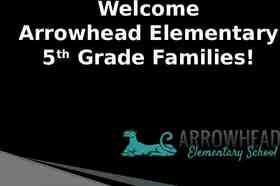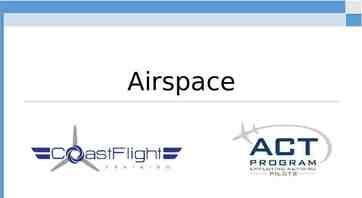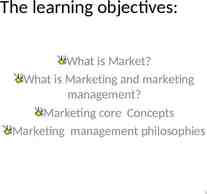Effective Governance on a Nonprofit Board of Directors William
23 Slides438.50 KB
Effective Governance on a Nonprofit Board of Directors William West Graduate Assistant University of Georgia May 2009
Board of Directors 101 Roles and Responsibilities 1. Determine and periodically review organization’s mission 2. Select and oversee the Executive Director 3. Ensure adequate resources 4. Provide oversight of income and expenses 5. Ensure legal and ethical integrity 6. Set and implement strategic goals 7. Enhance the organization’s reputation in the community 8. Continually monitor and improve Board performance
Questions to Consider To what extent do you actually fulfill these roles and responsibilities? How does your internal environment hinder you from fulfilling your duty as a member of the Board? How does it encourage you? How does your external environment hinder you? How does it encourage you?
Barriers to Board Effectiveness Temptation to micro-management A barrier because Board is charged with overseeing the EXECUTIVE, who, in turn, manages his/her staff Oftentimes results in wasting time on trivial matters Ineffective nominating committee Must be fine-tuned because Nominating committee determines the future make-up of the board of directors No plan for rotation A barrier because Limits opportunities for a real change Why needed? New members can help promote creativity and innovation in decision-making Failure to remove unproductive members A barrier because Prevents board from fully serving its purpose and fulfilling organizational mission Possible Solution: Must have system for evaluating board performance and making recommendations for future board service
Barriers to Board Effectiveness MORE Too small A barrier because Must have enough individuals to fulfill the multiple responsibilities and competencies of a board of directors Possible solution: Recommended numbers fall anywhere from 11 to 21 Lack of functioning committee structure A barrier because Most of the work that supports and implements major board decisions are done in committees No strategic plan A barrier because Board members often spend too much time talking about issues that are of little importance because there’s no real direction Results in a lack of long-range development plan that will help the organization prepare and thrive in the future No plan for orientation or training of new and old members A barrier because New members must be carefully joined so as to create a well-functioning TEAM Training is essential for growth and adapting to the ever-changing environment
Activity: Overcoming Barriers 1. Everyone will be given a post-it with one of the eight barriers (try not to look at it!) 2. Pair up with another person in the room and have them place the post-it on your back 3. Without overtly stating which barrier it is, one person should begin offering solutions to their partner’s problem and allow them to guess which one it is 4. Switch roles
Activity Questions Which barriers were the most difficult to find solutions for? Why? How did not knowing what your own issue was affect your ability to communicate with your partner? What solutions did you come up with? Which of the barriers – if any – are present in your organization?
Barriers No More In order to overcome these barriers, board members must develop and nurture valuable skills in the following areas: Contextual Strategic Analytical Political Interpersonal Educational
Keep Context in Perspective Understand and use the organization’s culture, norms, and values Success is Effectively utilizing distinctive characteristics of board members and the organizational culture and environment Relying on the organization’s mission, values, and traditions in decision-making Exemplifying and reinforcing organization’s core values
Diversify for Success A Board of Directors should contain members with unique talents, skills, interests, experiences, and social backgrounds Such diversity is more likely to produce new, innovative ideas and affect the organizational environment for the better To overcome barriers Implement term limits Create a streamlined process for removing unproductive board members Build a requirement for diversity into bylaws
Make Strategic Decisions Envision and shape the organization’s direction and devise a strategic approach for the future Success is Cultivating procedures that sharpen organization’s priorities Show concern for most important and long-ranged issues rather than more trivial matters Paying special attention to strategic decisions Anticipating and resolving potential problems Setting priorities and sticking to them
Stay in Touch Attempt to stay in tune with the happenings of the organization and other board members Knowledge is a key characteristic of effective board governance, of both the internal AND external influences Show a sincere concern for the issues affecting the organization and gladly accept the responsibilities of serving as a member of the Board of Directors To overcome barriers Create a Strategic Plan Create and utilize job descriptions Consistently communicate with one another Utilize new, innovative methods wherever practical
Create your own Team Building Activity Scenario: You’re the Executive Director of a nonprofit organization and you’re having trouble getting your board to effectively communicate with one another. Your task is to create an activity that will help encourage and facilitate discussion among the board members in a fun, creative way. Divide into small groups You have 15-20 minutes to come up with a challenging activity Try to create an activity that is better than the others! Present your ideas to the rest of the group
Take an Analytical Approach Recognize the complexities and subtleties in the issues you’re facing Success is. Seeking out and drawing on multiple perspectives Diversity is still important! Approaching problems from a broad organizational outlook Tolerating ambiguity Recognizing that there may not be a perfect solution To overcome barriers Know your own role and responsibilities Remain aware of the roles and responsibilities of key constituencies (staff, other board members, volunteers, etc.) Be patient!
Be Political but not like most politicians Develop and maintain open, two-way relationships with key constituencies Success is Consulting often and communicating, listening, and understanding the concerns of stakeholders Minimizing conflicts and win/lose situations Respecting the integrity of the governance process and the roles/responsibilities of others Politician and Effective: an oxymoron? Name an especially effective politician (whether you agree with him/her or not) What makes him/her successful? How can these characteristics be applied to a Board of Directors?
Interpersonal Skills: There is No Substitute Develop as a group and attend to the collective well-being and sense of cohesion Success is Creating and sustaining a sense of inclusiveness Settling on goals for the group Recognizing their achievements Encouraging leadership and teamwork Don’t forget: The board of directors is a team of individuals working toward a mission
Trust One Another In order to communicate effectively and more willingly accept ambiguity, board members must have a mutual respect for one another Maintain a productive working relationship with one another Be sensitive to the unique perspectives of others and LISTEN TRUST BUILDING ACTIVITY
We Don’t Need No Education actually you do Ensure that all members are well informed about the organization, its constituencies and their roles Success is Creating opportunities for own education and development Regularly seeking out information and feedback about performance Periodically pausing for self-reflection To overcome barriers Have a formal orientation for new board members Provide opportunities for training and/or further education Allow informal discussion of ways to improve board performance before/after board meetings
Look in the Mirror What are the greatest strengths of your board? In what areas is the most improvement needed? Have you attempted to make changes in the past? If so, how? What actions can you take to make sure that such improvements are implemented?
Case Study Pinehurst What are some of the strengths of this board? What are some of its greatest weaknesses? What are some of the potential positive effects of Beth’s proposed plan? What are the adverse effects? How should the Board Chair respond to possible changes? What do you think Beth should do?
An Effective Board of Directors Keeps context in perspective Is composed of a diverse group of individuals Makes strategic decisions Consistently communicates with one another Takes an analytical approach Develops and maintains two-way relationships Attends to the needs of the group Ensures that all members are well-informed
Questions?
Resources Holland, T. & Ritvo, R. (2008). Nonprofit Organizations: Principles and Practices. New York: Columbia University Press.




























